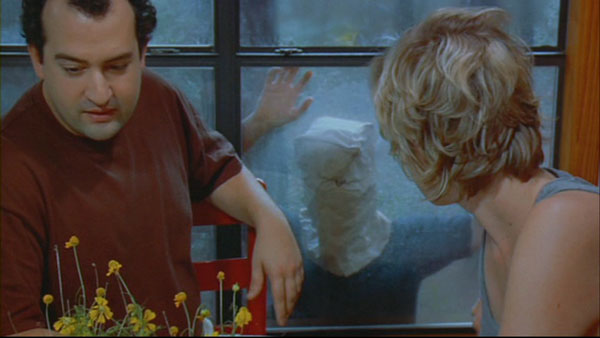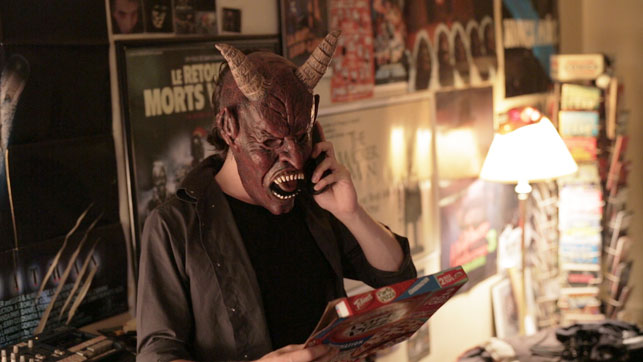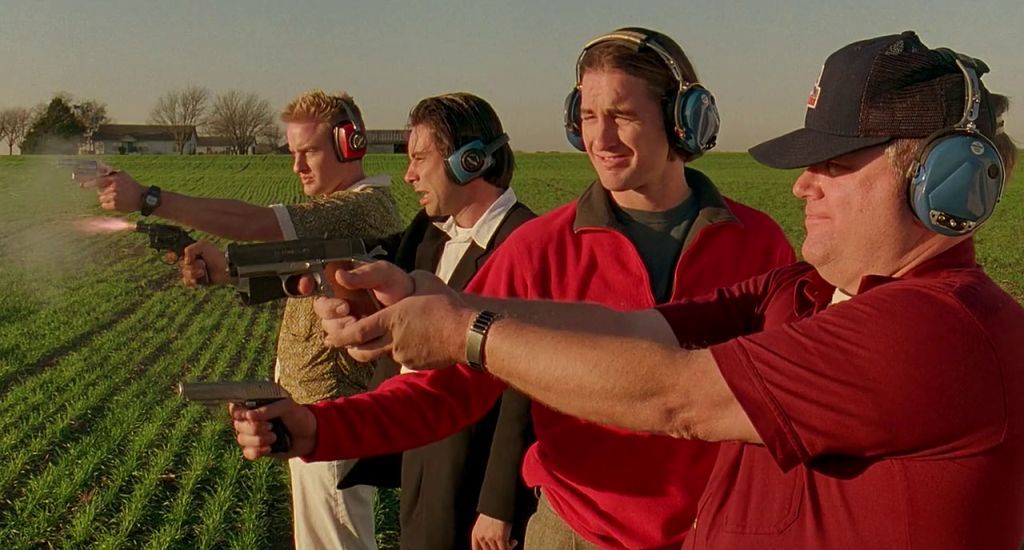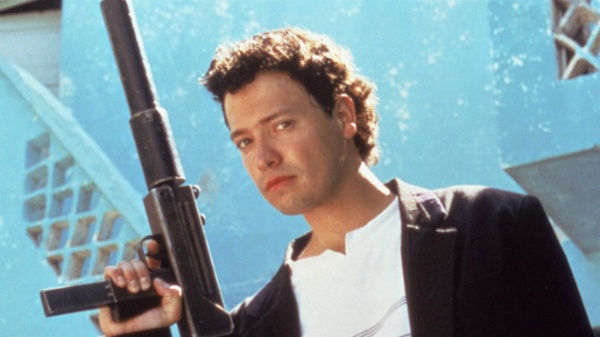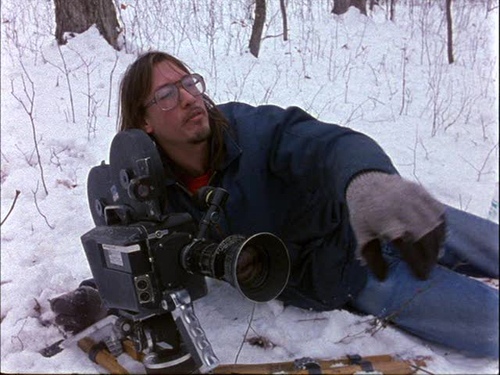In film school, students are shown the “classics,” films that have been deemed worthy by academics and the previous generation of filmmakers. It is important for students to watch and analyze these films. However, there are many excellent films left out of conventional film education that can teach and inspire students. Students should be exposed to a wide variety of films so they can begin to form their own opinions and tastes.
Bad films can teach viewers just as much about filmmaking as good films. The more students watch, the more they discover their own inclinations as filmmakers, an essential component of their education. Students should watch films made by young filmmakers at the beginning of their careers, films made for little money, and films that demonstrate innovation and ingenuity. Below is a list of films that, though not included in most film educations, will educate and encourage aspiring filmmakers.
1. Baghead
An early work by mumblecore innovators Jay and Mark Duplass, Baghead will be relatable to aspiring actors and filmmakers alike, as it captures the frustration of creative blocks and the lengths to which creators will go for their craft. Inspiration aside, however, this is a highly entertaining and hilarious film. After a discouraging independent film screening, four aspiring actors retreat to a cabin in the woods to write a screenplay.
Unable to secure roles in films, the quartet decides to write roles specifically for themselves. Despite having the best intentions, the four only find trouble as their creative endeavor is sabotaged by jealousy and hysteria. Simultaneously humorous, heartbreaking, and human, Baghead captures the struggle of creativity and life’s many obstacles.
This film can be beneficial to aspiring filmmakers and students for many reasons. Foremost, the film is about screenwriting and filmmaking. This film documents the difficulty of collaboration. Arrogance, jealousy, and inconsideration prevent the four actors from writing a screenplay that will launch their careers. They are unable to check their egos for the sake of creativity.
An aspiring filmmaker can greatly benefit from this lesson alone. Additionally, the film demonstrates the limitless possibilities of filmmaking and storytelling, despite having limited resources. The budget for this film is extremely low, and is shot mostly handheld. There are only two or three locations, no special effects, and a small cast. Despite a seemingly low production quality, the film demonstrates the wonders that innovation and creativity can do even with limited resources.
2. Buzzard
Writer/Director Joel Potrykus’ second feature length effort, Buzzard is a punk rock con-man comedy. Marty is a small-time con artist who works in a large corporate office. After one scam, Marty becomes paranoid that law enforcement is on to his criminal activity. He flees his hometown armed only with bogus checks in one hand and a retrofitted Nintendo Power Glove on the other.
Broke and on the run, Marty hides out at his friend Derek’s house and at a motel in Detroit. Blurring the line between comedy and horror, Buzzard was described by IndieWire as “Office Space on crack.”
Often considered a “guerrilla filmmaker,” Joel Potrykus’ first two films were made with very low budgets, even by independent film standards. Due to minimal funding, Potrykus and his team crafted a film around what they had at their fingertips, such as the Michigan landscape and their group of friends, allowing them to save money on set design and casting.
Though he will not disclose the exact budget of Buzzard, his first feature film, Ape, was made for $3,000. The entry costs of the festivals it was submitted to exceeded the entire budget of the film. In addition to using his surroundings, Potrykus’ cinematographer also shot with a low-profile DSLR, often in a run-and-gun style in without filming permits.
Despite this “guerrilla” style, the final product is refined and premiered at SXSW. Film students can learn much from Potrykus’ micro-budget approach, as it disproves the myth that filmmaking has to be expensive.
3. Bottle Rocket
Wes Anderson’s first film, Bottle Rocket is a low-budget crime comedy about a trio of friends who try to get rich quick. Luke and Owen play Anthony and Dignan, small time criminals who, with the help of their friend Bob Mapplethorpe, plan a crime spree under the guidance of the mysterious Mr. Henry (James Caan).
However, love, jealousy, and ineptitude thwart their plans. Bottle Rocket exhibits the work of a young Anderson and shows early signs of his tendencies as a director. The film contains many of the distinct elements of a Wes Anderson film, though they are less developed than in his later films.
Despite commercial failure, the film established Anderson as an exciting young director, earning him acclaim from critics and Martin Scorsese alike. Bottle Rocket began as collaboration between Anderson and the Wilson brothers as students at the University of Texas. They shot a short, black-and-white film, which was eventually remade into the feature length that is Bottle Rocket.
In a short documentary about the making of the film, one can watch the unlikely journey of these three filmmakers from a modest short to a studio-funded feature film. The original short, the documentary about the production, and Bottle Rocket itself prove highly informative for budding filmmakers.
Throughout the film one can see Anderson learning and developing his voice and style, which have made him one of the most distinct and celebrated filmmakers of his generation. The original short film, also called Bottle Rocket, demonstrates the great possibilities of low-budget filmmaking.
4. El Mariachi
The story of Robert Rodriguez’s El Mariachi is often cited as an example of the possibilities for independent filmmakers. El Mariachi was intended as practice for Rodriguez; no one in America was supposed to see it. Robert Rodriguez, like many other crafty filmmakers, wrote the film around what he had access to, cutting down on casting, set, and prop costs.
The film depicts a case of mistaken identity, when El Mariachi is thought to be a killer who conceals weapons in a guitar case. A drug lord and his henchmen hunt down El Mariachi trying to kill him. By hacking consumer grade technology, borrowing gear, and casting friends and family, Rodriguez was able to make a cult classic for very little money.
In his book Rebel Without A Crew, Rodriguez describes in detail his background, the making of El Mariachi, and the negotiating process with both the Latino and American film markets. Rodriguez intended to sell the film to straight-to-video distributors in Central America. However, after being rejected by Latino distributors, Rodriguez submitted the film to various major distributors in America where he began to gain attention.
What began as a test-run for Rodriguez turned into his breakthrough film and a cult classic. Many are shocked by the micro-budget that Rodriguez used to make El Mariachi, a mere $7,000 he earned through experimental medical testing as a student at the University of Texas. In a behind-the-scenes documentary and in his book, Rodriguez exposes every low-budget trick he used to cut down on spending and make the most of his money.
Given the quality of the finished product, the improvisation, spontaneity, and crudeness of the production are surprising. Rodriguez shot the film on 16mm because it was cheaper than 35mm, and then converted the footage to tape so he could edit it on two VHS players fashioned into a makeshift editing tool. Rodriguez also used the original ideas from El Mariachi as inspiration for his later films Desperado and Once Upon A Time in Mexico.
5. Dogtooth
Nominated for the Academy Award for Best Foreign Language Film and winning two Cannes prizes, Dogtooth is a surreal and perverse masterpiece from Greek filmmaker Yorgos Lanthimos. The film depicts a bizarre family household in which the parents prevent their adult children from leaving their home.
Additionally, the mother and father lie to their children about the reality of the world outside the fences of their home. The children pass the time by playing games and are rewarded for good behavior with stickers and punished with violence for acting out. Trouble comes to the household when the children are infected with influences from the outside world and begin to wonder what lies beyond the limits of their home.
Dogtooth proves that multiple locations, large casts, and special effects are all unnecessary for quality storytelling. Despite most of the film taking place in the house, there is no shortage of action. Setting is irrelevant if the story is strong. Dogtooth was made for only about 250,000 Euros, with many crewmembers working as unpaid volunteers.
Lanthimos and Thimios Bakatatakis were able to strip down their camera budget and reduce their number of takes by sticking to a simple cinematographic style, often featuring wide shots that show the action as well as the context in which it occurs. Despite being made with a low budget and lesser-known actors, the film was massively successful, often being considered one of the most important Greek films in the past fifty years.
6. Jodorowsky’s Dune
The best documentary about a film that was never made, Jodorowsky’s Dune describes a film adaptation of the science fiction classic Dune that fell apart before it could be produced. Featuring interviews from the charmingly eccentric Alejandro Jodorowsky, the film exhibits the amazing and colorful backstory of a film that never was.
Despite the film’s failure, the production included an all-star cast of collaborators including Pink Floyd, Salvador Dali, Orson Welles, Mick Jagger, and many other stars of the time. It is unfortunate the film was never made, as it likely would have been one of the most iconic films of the 1970’s.
Through interviews with Jodorowsky and his many collaborators, one gets a rare insight into the avant-garde director’s mind and philosophy towards filmmaking. His optimism, confidence, and imagination are both delightful and inspiring. His holistic approach to filmmaking, which he calls “psychomagic,” combines his interests in shamanism, alchemy, and Eastern religions to form a collaborative and spiritual method.
Like his other films such as El Topo, Santa Sangre, and The Holy Mountain, Dune would have been a psychedelic and visually thrilling work. Because of his wondrous approach to film, Jodorowsky is unlike any other filmmakers working today. His optimism and love for the craft are inspiring. It is also fascinating to learn about the backstory of the film.
7. American Movie
It is hard to believe American Movie is a documentary. This film is so full of gems that it seems too good to be true. As a student at the University of Wisconsin’s Graduate Film Program director Chris Smith met fellow student Mark Borchardt. What began as a short about a Midwesterner attempting to break into the film industry evolved into the classic that is American Movie. Borchardt is a small-time director attempting to finance and produce his dream film, a low-budget horror flick called Coven.
The film intimately depicts the struggles of Borchardt as he attempts to overcome his own personal demons while working hard to pull together the production of his film. Down on his luck but passionate about his dreams, Borchardt is a sympathetically quixotic yet admirable subject.
Shot over the course of two difficult years, American Movie will be relatable for anyone who has worked on a film set. It captures the many setbacks and struggles that are part of filmmaking, ranging from budgetary constraints to unreliable crewmembers. This film also shows the great sacrifices Borchardt makes for his film.
Winning the Grand Jury Prize at the 1999 Sundance Film Festival, American Movie was named by the New York Times as one of the “1,000 Greatest Movies Ever Made” and one of the twenty best documentaries of all time by the International Documentary Association.
In addition to capturing the difficulty of filmmaking, American Movie also compels viewers to consider the importance of subject matter and the complex ethics of documentary film. Chris Smith met Borchardt only by chance at school but was able to recognize his immense potential as the subject of a film. However, one must also wonder about the ethical considerations of the film, as Smith exposes Borchardt’s many troubles.

